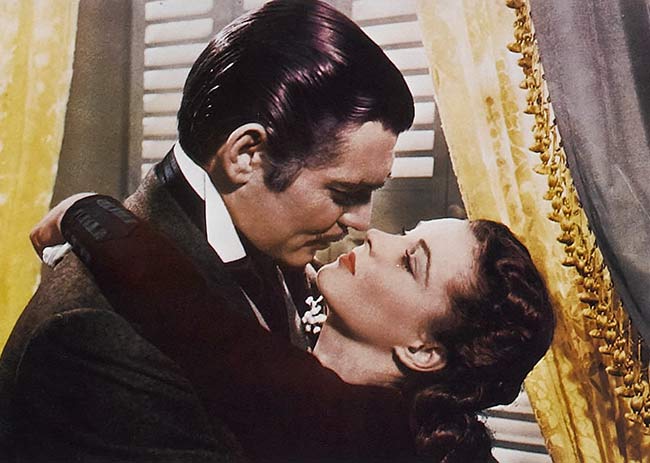How Writers Can Be Storyshowers instead of Storytellers
Editor Rachel Starr Thomson dives into our new monthly fatal flaw: # 6 Telling, instead of Showing, Story . Writers often succumb to this fatal flaw of fiction writing, explaining and telling and summarizing instead of showing action as it’s happening. Topics this week cover three ways writers can RUE (resist the urge to explain) and hook readers will dynamic scenes.
Once upon a time, we were storytellers.
We wrote like Homer:
The men flew to arms;
all the gates were opened, and the people thronged through them,
horse and foot, with the tramp as of a great multitude.
Or like whoever wrote Beowulf:
Hwæt! w? G?r-Dena in ge?r-dagum
þ?od-cyninga þrym gefr?non . . .
Okay, never mind about Beowful. The point is, stories were told, and while that meant some especially poetic details were thrown in, for the most part stories got summarized, with huge swaths of action happening from a long-distance view, like in the Iliad above.
But then along came technology (hail, Gutenberg!) and changing literary conventions, and movie cameras, and somewhere along the way we became storyshowers instead.
We now have an axiom in fiction: “Show, don’t tell.” In practice, the rule works out in a number of ways, and we’ll be looking at several this month. This week, I want to look at “show don’t tell” as it relates to scene vs. summary.
Essentially, we write in one of two ways: in scenes—with specific action, dialog, characters, a place, a time—and in summary. All novels use both to some degree, but the balance should always be heavily on the side of scenes. And even in summary, there are ways to show effectively.
In my novel Taerith, I needed to cover a period of captivity during which the hero is captive to a barbarian tribe. But I didn’t want to just switch over to pure summary—I still wanted to write in a way readers could see and hear and feel. My goal was to open a window into the captivity and allow readers to feel as if they’d experienced it too, even though it’s passed over relatively quickly in the book. You can judge how well I did.
BEFORE:
The tribe kept Taerith captive for several weeks. They let him out of his bonds in the evening, so he would exercise to try to stay strong. The winter made it hard and painful, but he was glad to be alive.
AFTER:
His arms were bound behind him most of the time, tightly pinioned with several thin cords. Each evening the barbarians cut loose the cords and watched him with a curiosity that was almost friendly, five or six standing guard at a time, while he swung his arms and rubbed them and set his teeth against the pain, allowing circulation to come back, making sure his arms stayed strong.
He dropped to the ground and pushed himself up a few times, even as his bare hands slipped and ached in the cold snow and the colder mud.
Aiden’s lessons on survival thundered in the newly released blood flow through his arms and fingers. It hurt, but it was good. There were white and blue patches on his hands and feet where frostbite was setting in, and his face stung, but he was alive and still grateful for it.
The Before paragraph is pure summary—akin to the Iliad passage I quoted earlier. It shows us, from a distance and without any real detail, what happened. And it would be appropriate in some books, in order to transition from one scene to the next.
The After paragraphs, on the other hand, show. What makes the difference?
- First, detail—especially sensory detail, the kind we can see, hear, taste, touch, or smell. Closely related is the need for time and place—so events don’t just happen in white space but within a world that is present to the senses.
In the first paragraph, we read: “the tribe kept Taerith captive.” In the second, we have thin cords, pinioned arms, and barbarians standing around to watch. He isn’t just cold; he’s got blue and white frostbite batches, and his bare hands ache. In the first paragraph, Taerith exercises to stay strong; in the second he’s slipping around in the snow and mud each cold evening. There’s a strong sense of place and of time actually passing. We can see and feel the surroundings.
- Second, action. Specifics are the key here. He’s not just “exercising”; he’s doing push-ups, and blood thunders through his arms and fingers. Barbarians cut him loose and watch with friendly curiosity.
- Although there isn’t any in this example, dialog is a third key to showing—writing a scene rather than just summary. If you say, “He called out,” you’re summarizing. If you say, “Hey, you in the red coat!” we can hear what’s being called out—specific words, and a tone and implied volume that go with them.
On occasion, a writer will send me a manuscript that is almost pure summary—one hundred pages of it or more. It’s told, not shown. In a book like that, we do learn a story. But we don’t enter it—we’re never immersed. We never get into the skins of the characters or the world they inhabit.
Summary keeps readers distant. Showing invites them into an experience. We writers are storytellers, but if we want to immerse and engage our readers, we need to be more. We need to be storyshowers.
Your turn:
As you work through your WIP, do you see places where you’re telling instead of showing? Do you revert to summary instead of writing out scenes that are anchored in a specific place and time, with dialog, action, and sensory detail? How might you convert these passages so they come alive?











After I finished what I thought was the final draft of my first book, on the advice of an agent who still ended up not taking me on, I hired an editor who effectively beat that phrase into my forehead. As a result, I think I do a pretty good job, but it’s still something of which I need to be constantly aware.
Thanks for your comment, Joe! I’m pretty sure the learning on this one never ends. It’s amazing how many times I write a scene that’s totally wooden, and then I go back and add a bit of sensory detail and dialogue and voila! it’s alive. Glad you and your editor make such a great team!
This is a revealing piece with great instruction. After reading it, I went back to my novel that needs improvement. I found several – no, more than that – areas that I will address, based on this article. Thank you, so much, CS. Your postings are incredible, precious, informative blessings to writers like me. (No – to ALL writers.) That’s a lot of noes, isn’t it?
Thanks for the kind words! I’m glad this blog is helping your writing, and these editors who are doing the monthly attack on the fatal flaws of fiction writing and awesome. It’s a lot of work putting all this material together, but I know Rachel and the other editors will say they love to help writers!
Thanks, Bob! I’m so glad it was helpful to you, and especially that you found ways to start implementing it immediately in your own work. Have fun!
Incredibly helpful example. I’ve read advice similar to this before, but with less effective “After” parts that were badly written and somewhat corny.
I loved how you made me feel “in the moment,” and will take your advice to heart. Thank you!
Thanks so much, Kristi! I’m really glad it was helpful. I actually chose that passage because after the book came out, a couple of beginning writer friends wrote to tell me that when they read that scene, “show, don’t tell” suddenly made sense to them. I love that I can share it around :).
Thank you for your words on “showing” and not “telling” when it comes to the meat of a story. It’s almost as if we’ve heard those words a thousand times before, SHOW don’t TELL, but somehow we still make mistakes when it comes to learning to be a “story-shower”. I suppose it comes down to the incessant act writing…writing so much that the act of “showing” simply becomes second nature. At least that’s how it works for me when I’m in that blessed and necessary groove of writing all the time, and by my umpteenth re-write, I usually have something that lends itself to quality. But, I still look forward to the day when a first-draft feels “really good”. As always, I appreciate your words and guidance!
Thanks for your comment, J. Michael! Yup, incessant writing helps a whole lot, whether it’s rewriting old material or just continuing to churn out new stuff and “practicing” as you go. I believe you’ll get to that feel-good place. Have fun along the way!
Great advice, which I plan to use in the continuing edits of my latest manuscript. Loved the bit about Beowulf…guffaw of the day!
LOL, glad you liked it! I couldn’t stop laughing when I looked up some of the text, so I figured I’d better use it. Glad you’re able to use the advice right away!
Rachel,
Great tips here. Am reblogging on my site now!
And thanks much!
Lisa Ciarfella
Awesome, thanks for the reblog! You’re very welcome :).
Thanks so much for these tips. As an emerging author, I’ve realized telling is such an easy thing to do, so I’ve had to work on showing more. I tend to summarize and have made it a goal to reread for places that can be expanded on, to help my reader SEE what’s happening. I find this article so helpful, that I’m linking it in today’s post on my blog at http://bit.ly/1BWYbEI. Thanks again!
I was visiting Story Dam and came upon the second part of your article and it so interested me that I decided to come and read part one. Thanks. You have given me clarity on showing versus telling at a time when I need it.
Shalom aleichem,
Patricia
Glad this post helps you!
I still unconditionally prefer the BEFORE-cersion, and would not read novels written like the AFTER-version. I deem immersion foul and appalling; therefore, I avoid it rigorously. Keeping readers distant is absolutely paramount for me, just as I require to be kept at distance.
Good luck with that!
In response the Klaus Schilling’s comment…I think it just is a matter of how one reader “interprets” information as opposed to another reader. Most readers actually WANT to be “told” AND “Shown” ALL the time, and then there are the readers who prefer self-interpretation, as in “letting it up to the reader to paint the picture”, or at least, part of the picture. I think when there is TOO MUCH “show”, a reader can be a but pulled, as on a leash, as opposed to freely walking through a story with a “third” eye open all the time…does this make any sense to anyone??? It’s almost a matter of “how” one reads a story…yes? And perhaps a “well read” individual can manipulate the “less show” path than others. I don’t know…maybe I’m just playing the devil’s advocate and trying to look at the issue effectively from both sides.
Ooooops…and I apologize for the typos in my last reply.
So sorry about that, as I was in a hurry…
Very helpful…Thank you. My current manuscript needs me to become a storyshower.
I found the scene that you used as an example from your book to be very engaging and well written. However I have observed too many experts that have quoted examples of ‘showing’ from best selling authors that were too theatrical and uncomfortable for me to read. Also don’t think that writers from a former era were lacking. Their ability to use the English language and manipulation of scene structure were masterful in ‘telling’ their story.
I find your site and blogs very enlightening and learn something new on every occasion.